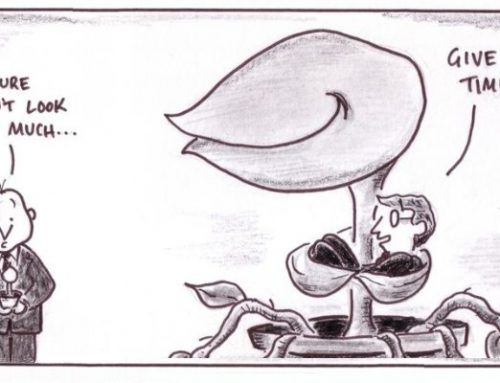Remove all the bells, whistles, and self-aggrandising fluff, and the aim of a Talent Acquisition program is to engage and secure the employment of good people for your organisation. To meet this expectation, what needs to be in place to maximise the chance of an efficacious talent program where the best people out there are kicking down your door to join your company?
In this post, we’re going to look at the two areas and dissect each constituent and define what the best version of each looks like, and what steps you can take to start moving towards this end-state. There’s far too much ground to cover everything in an format like this, so we’re going to be keeping things fast and try for maximal coverage rather than depth on each area. If you want more detail on a particular area, by all means leave a question of reach out to us for a chat.
At Mercuras, we like to breakdown an organisations approach into two distinct areas; Core Activities, and Ancillary Activities. Putting aside other metrics for the moment, the successful Core Activities culminate in securing new talent for your organisation – pure and simple. The typical high-level steps are;
-
Generating a requirement
-
Broadcasting that requirement to the wider world
-
Capturing incoming interest
-
Screening and securing a pool of people for interviews
-
Deciding, hiring and on boarding the right people
It’s really quite straight forward, but of course, the devil is in the details. The apparently simplicity of this process leads to the summit of Mt Stupid which we’ve discussed before.
By creating SOP’s (Standard Operating Procedures) around each of these areas, you can, however, markedly increase the quality of outcomes. So, sit down and work out exactly what you think will work, and understand that given your position as a new(ish) company, the whole process will be iterative. Just start somewhere! Document your process steps for each area, question your assumptions. Try them. Refine them. Repeat. But again, at risk of belabouring the point, document the steps and adhere to them. Keep them as the cornerstone of your hiring process, and keep them prominent, not in some directory last accessed eons ago.
The Ancillary Activities are there for both their own merits and benefits, and to bolster the performance of the core elements of your program. If the Core Activities are ‘pulling in the nets and landing the fish’, Ancillary Activities are ‘the chum in the water’. Intelligent, judicious, and genuinely strategic use of social media from your people and the company entity if it actually provides insight to your industry and company, is a potentially massive draw to prospective employees. Just generating more articles on saturated topics without additional insight or commentary is just wasting your time, and that of your readers. Make it good, and make it count – there’s already enough crap content out there. It’s all about creating interest, not just noise on LinkedIn. If you’re going to hold meet-ups or events, do them properly too. Really put yourself in the seat of your prospective audience and don’t make it self-serving or a sales pitch. Make it something you’d want to attend. Even if a small gathering at first, run it properly with an agenda and topics and proper registration. Conduct follow-up surveys to understand what was good, bad, and what your talent audience might want to see next time. Get creative.
Preliminary Groundwork
So now we have a rudimentary understanding of the Core and Ancillary Activities, what ingredients are required to help you define your talent program to ensure it meets your objectives? In order for us to start getting deeper into the process, we need to understand what the projected requirements are that we need to meet, and get a rough (back-of-a-napkin level at this stage) gap analysis up and running, and the resources you have at hand to tackle the tasks.
The areas to take stock of your current situation;
- Hiring patterns; conservative, likely, aggressive – cover numbers and rough timelines
- Current Tools, artefacts, processes, and resources
- Established style guides and branding collateral
- A list of your online & social presence areas
- Budget for talent projects and campaigns
Once we have an understanding of what we need, we can look at what we can do to meet this with current resources, and what we have still to acquire, and prioritise accordingly.
Core Functions
As with most things, reinventing the wheel every time you must perform a task, is a waste of time, resources, and precious thought-cycles. Each time hiring, with some intelligent forethought, you can have a set of SOP’s to provide a framework for your actions.
The following provide remedy to the first list of five high-level steps at the start of this piece, and assume very little in terms of adoption of specific tools;
- Generating a requirement. Create a Job Description template without any extraneous details – just the critical ‘elevator pitch’ for the job. Don’t feel the need to add more duties or general statements because the page looks light compared to other JD’s you’ve seen. Clarity and simplicity go hand-in-hand. Have the outline of the company and the culture ready to insert as part of the next steps, but leave them off the JD’s.
- Broadcasting the requirement. Where are your prospective employees? LinkedIn? Facebook? Github? Job boards? Choose two – no more – and engage on those channels hard. Document the metrics from each channel to create ongoing benchmarks against which future campaigns might be compared. Identify budget here too – would you see better returns from job board campaigns or grabbing a few people you’ve met for a meal and a drink and a chat about maybe coming on board?
- Capturing incoming interest. At the most basic level a jobs@domain email address for every applicant to fall into is necessary to capture each person. You can steer traffic from all sources there. Not ideal, but it’s a start. As your talent program gets more sophisticated that will change to a less manually-intensive option, but you need to start somewhere and have a single end-point.
- Screening and securing a pool of people for interviews. Book calendar spots ahead of time by email for 15-minute phone screens with any suitable candidates. Put all unsuccessful applicants into a list for later too. Pencil in likely times for those needing to attend the meetings with people too. Keep both phone screens and initial face-to-face interviews light and friendly. By all means have questions you want to ask, but make it conversational. A gestapo-styled call-and-response interview is an invitation for bullshit on both sides. Start-ups and SME’s typically have the luxury of wandering off-topic and not being under such tight constraints when it comes to agenda and process adherence, so get to know the person opposite. A more deep-dive capability assessment should come afterwards. Screening & interview questions (and ideal answers!) should exist, but having a printed list in front of you is a sure-fire way to put people on the defensive.
- Deciding, hiring and on boarding the right people. Once you’ve decided you’ve found the right person for your role, extending an offer is next. There’s a long and subtle art to this part, so aim to keep it simple, and you should already have covered expectations for remuneration early on, so it comes down to start-date and on boarding. Make sure they have at least a week in between finishing their current role and starting with you if at all possible. A fresh and full recharged new-starter is a much better option. Imagine turning up for a first date dishevelled, exhausted, half-drunk, and entirely distracted by other matters. You wouldn’t, but organisations do this all the time to their new staff. No computer ready, no phone, logins not created, no desk, no time booked with other staff or even their manager… Get this right; Have an onboarding checklist!
The ecosystem you create around these functions must be perpetual. Measure twice, cut once. Re-inventing your protocols and platforms is not a recommended hobby. Create a directory on a shared/cloud drive somewhere to keep all the artefacts you’ve created(ing) for the above steps like SOP’s, JD’s etc.
Start off with some form of ATS (Applicant Tracking System) to record the details of each application. An ATS really ranges from a simple spreadsheet through to enterprise-ready solutions to manage thousands of potential and actual employees effectively. Of course, the complexity scales accordingly, and so to the performance and value when used properly. There are some reasonable freemium options out there, so they can be a good place to start.
Regardless of whether you have full-time Talent Acquisition staff, whether the onus falls to HR, if you’re bootstrapping and doing everything between a handful of brave fools, take the time to do this stuff – it’s how your business will grow.
Needs a few more ideas? Reach out to Mercuras Consulting and we can have a chat:


Leave A Comment